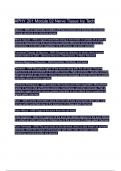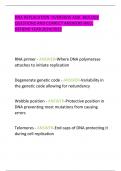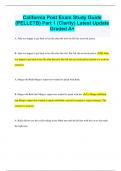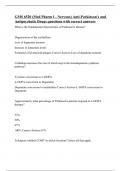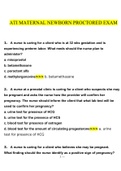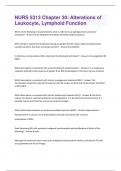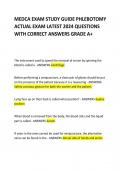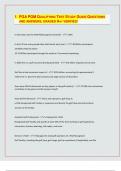Exam (elaborations)
APHY 201 Module 02 Nerve Tissue Ivy Tech with 100% correct answers | verified | latest update 2024
- Module
- APHY TESTS
- Institution
- APHY TESTS
APHY 201 Module 02 Nerve Tissue Ivy Tech with 100% correct answers | verified | latest update 2024
[Show more]
